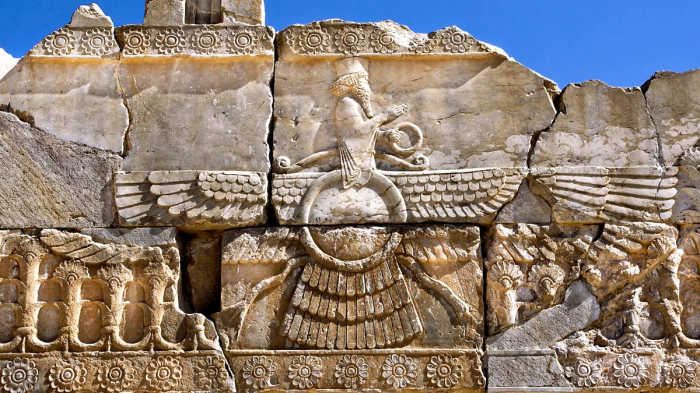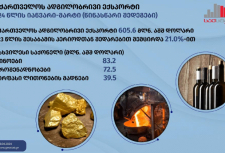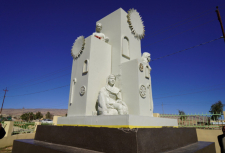Yezidism and Zoroastrianism: similarities and differences

The final
The prayers of Zoroastrianism have many similarities with the prayers of the followers of Yezidism and are also pronounced with two palms raised up at chest level and a face turned to the sun. The number of daily prayers is the same as that of the Yezidis, five, but the most important and obligatory are morning and evening prayers (at sunrise and sunset). Just like the Yezidis, sacred texts should be transmitted orally. In Zoroastrianism, the teaching was transmitted exclusively orally since the Zoroastrians considered any letter to distort the Truth of the Prophet's oral speech. Despite this, in the III century AD. The Zoroastrian teaching was set forth in the Avesta.
The main religious holidays also coincide – in mid-spring, mid-summer, the harvest festival, the feast of the return of livestock from summer pastures, mid-winter, the feast of the commemoration of the deceased and the New Year in the month of April (Nisan). Mandatory attributes of the New Year's Eve are lamps with fire, painted eggs and flowers. All these objects have a certain meaning - the fire symbolizes purification, the egg is a symbol of the origin of life, flowers are the flowering, brightness, and diversity of life. The main holiday in Zoroastrianism, as well as in Yezidism, falls on the 20th of December (on the day of the winter solstice, when the increase in daylight begins) - "dedicated to the God – Ida Ezid", in Zoroastrianism "dedicated to the Sun God - Mitra". Not a single holiday, ceremony or rite in both Yezidism and Zoroastrianism was complete without a fire that is lit in temples. The Yezidis have preserved these holidays to this day.
There are also similarities in terminology: religion is called "daena" (modern din); priests feast; holidays - "jezhn", "Aida", etc. The number of angels also coincides, only the Yezidi archangel Malik Taus, in Zoroastrianism is opposed to Amesha Spenta. Even the main symbol of Zoroastrianism - "Faravahar", strongly resembles the Yazidi symbol of the "Divine Peacock", to the wings and tail of which a human image with a solar disk is added. All this has been preserved in Yezidism to this day.
As we can see, in Zoroastrianism rituals, terminology, symbolism changed, but the essence remained the same. Based on this, it can be argued that Yezidism is the primary source in relation to Zoroastrianism, and not vice versa. We have touched only on the main provisions of the two religions in order to demonstrate the relationship between Yezidism and Zoroastrianism. Of course, for a more detailed comparison, special studies are needed, which, as we know, have not yet been conducted in the world.
Yuri Dasni
Tags: #yazidisinfo #newsyazidis #aboutyazidis #yazidishistory #religionyazidis
Yezidism and Zoroastrianism: similarities and differences

The final
The prayers of Zoroastrianism have many similarities with the prayers of the followers of Yezidism and are also pronounced with two palms raised up at chest level and a face turned to the sun. The number of daily prayers is the same as that of the Yezidis, five, but the most important and obligatory are morning and evening prayers (at sunrise and sunset). Just like the Yezidis, sacred texts should be transmitted orally. In Zoroastrianism, the teaching was transmitted exclusively orally since the Zoroastrians considered any letter to distort the Truth of the Prophet's oral speech. Despite this, in the III century AD. The Zoroastrian teaching was set forth in the Avesta.
The main religious holidays also coincide – in mid-spring, mid-summer, the harvest festival, the feast of the return of livestock from summer pastures, mid-winter, the feast of the commemoration of the deceased and the New Year in the month of April (Nisan). Mandatory attributes of the New Year's Eve are lamps with fire, painted eggs and flowers. All these objects have a certain meaning - the fire symbolizes purification, the egg is a symbol of the origin of life, flowers are the flowering, brightness, and diversity of life. The main holiday in Zoroastrianism, as well as in Yezidism, falls on the 20th of December (on the day of the winter solstice, when the increase in daylight begins) - "dedicated to the God – Ida Ezid", in Zoroastrianism "dedicated to the Sun God - Mitra". Not a single holiday, ceremony or rite in both Yezidism and Zoroastrianism was complete without a fire that is lit in temples. The Yezidis have preserved these holidays to this day.
There are also similarities in terminology: religion is called "daena" (modern din); priests feast; holidays - "jezhn", "Aida", etc. The number of angels also coincides, only the Yezidi archangel Malik Taus, in Zoroastrianism is opposed to Amesha Spenta. Even the main symbol of Zoroastrianism - "Faravahar", strongly resembles the Yazidi symbol of the "Divine Peacock", to the wings and tail of which a human image with a solar disk is added. All this has been preserved in Yezidism to this day.
As we can see, in Zoroastrianism rituals, terminology, symbolism changed, but the essence remained the same. Based on this, it can be argued that Yezidism is the primary source in relation to Zoroastrianism, and not vice versa. We have touched only on the main provisions of the two religions in order to demonstrate the relationship between Yezidism and Zoroastrianism. Of course, for a more detailed comparison, special studies are needed, which, as we know, have not yet been conducted in the world.
Yuri Dasni
Tags: #yazidisinfo #newsyazidis #aboutyazidis #yazidishistory #religionyazidis

























